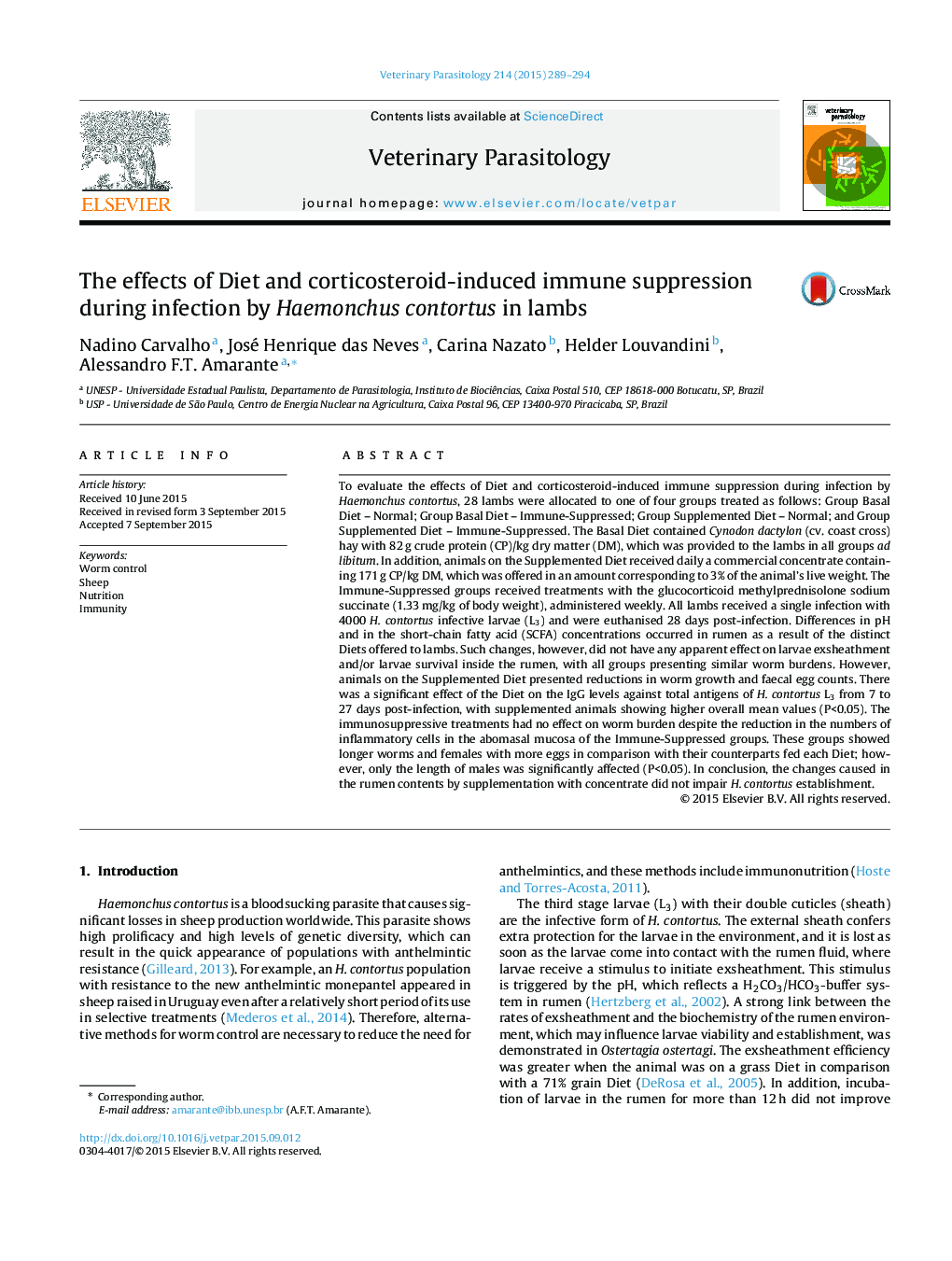| Article ID | Journal | Published Year | Pages | File Type |
|---|---|---|---|---|
| 2469912 | Veterinary Parasitology | 2015 | 6 Pages |
•The changes caused in the rumen contents by supplementation with concentrate did not impair Haemonchus contortus establishment.•Lambs on the Supplemented Diet presented reductions in worm growth and fecundity.•Lambs on the Supplemented Diet presented higher IgG levels against total antigens of H. contortus infective larvae.•The corticosteroid-induced immune suppression had only a small effect on parasite growth and fecundity and no effect on worm burden.
To evaluate the effects of Diet and corticosteroid-induced immune suppression during infection by Haemonchus contortus, 28 lambs were allocated to one of four groups treated as follows: Group Basal Diet – Normal; Group Basal Diet – Immune-Suppressed; Group Supplemented Diet – Normal; and Group Supplemented Diet – Immune-Suppressed. The Basal Diet contained Cynodon dactylon (cv. coast cross) hay with 82 g crude protein (CP)/kg dry matter (DM), which was provided to the lambs in all groups ad libitum. In addition, animals on the Supplemented Diet received daily a commercial concentrate containing 171 g CP/kg DM, which was offered in an amount corresponding to 3% of the animal's live weight. The Immune-Suppressed groups received treatments with the glucocorticoid methylprednisolone sodium succinate (1.33 mg/kg of body weight), administered weekly. All lambs received a single infection with 4000 H. contortus infective larvae (L3) and were euthanised 28 days post-infection. Differences in pH and in the short-chain fatty acid (SCFA) concentrations occurred in rumen as a result of the distinct Diets offered to lambs. Such changes, however, did not have any apparent effect on larvae exsheathment and/or larvae survival inside the rumen, with all groups presenting similar worm burdens. However, animals on the Supplemented Diet presented reductions in worm growth and faecal egg counts. There was a significant effect of the Diet on the IgG levels against total antigens of H. contortus L3 from 7 to 27 days post-infection, with supplemented animals showing higher overall mean values (P<0.05). The immunosuppressive treatments had no effect on worm burden despite the reduction in the numbers of inflammatory cells in the abomasal mucosa of the Immune-Suppressed groups. These groups showed longer worms and females with more eggs in comparison with their counterparts fed each Diet; however, only the length of males was significantly affected (P<0.05). In conclusion, the changes caused in the rumen contents by supplementation with concentrate did not impair H. contortus establishment.
